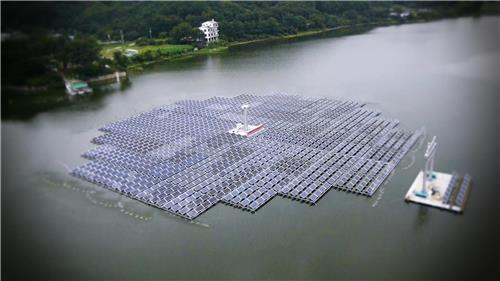A South Korean solar developer revealed last week plans to build the world’s largest rotating solar park at a reservoir in the country.
Solkiss, which specializes in the development of floating solar arrays, has revealed details of its proposed 2.67 MW PV project at the Deoku Reservoir. The installation will not only float atop the water but will also follow the sun’s movement throughout the day.
Solkiss has established technology for rotating solar power stations on water, whereby the floating devices that the PV modules are attached to are powered by engines designed to move to track the sun.
The developer claims that this technology helps to deliver 22% extra solar energy yield compared to a fixed installation on land, and a 16% increase in yield compared to typical floating solar arrays.
Popular content
Two additional rotating solar plant are also planned for the Myeoku Reservoir. Combined, the two installations will add 3 MW of solar PV capacity to Solkiss’ floating solar portfolio. Solkiss plans to finish all three installations by the end of November, with construction having begun last week at the Myeoku Reservoir.
Solkiss’ first foray into floating solar development was in 2014 when the developer installed a 465 kW array at a reservoir in Anseong, south of Seoul, using its patented rotating motors.
The developer hopes to continues installing rotating solar plants at viable reservoir sites across South Korea as the nation continues to shift away from nuclear- and coal-fired generation towards renewable energy.
This content is protected by copyright and may not be reused. If you want to cooperate with us and would like to reuse some of our content, please contact: editors@pv-magazine.com.


A clever concept. It may be significantly cheaper to add small propellers or steering jets in water than mechanical tracking devices on land.
good idea however this is a region which suscept to storms and high speed winds. having a frame would probably make the whole system more robust and resillient
Very interesting. What about gain when compared against an on-land tracking system? And what about autoconsumption (parasitics) for this system?
With world-wide water shortages, this technology could be enhanced if it was designed to reduce solar evaporation. As designed, it already has an impact. But it might be improved by blocking evaporation.